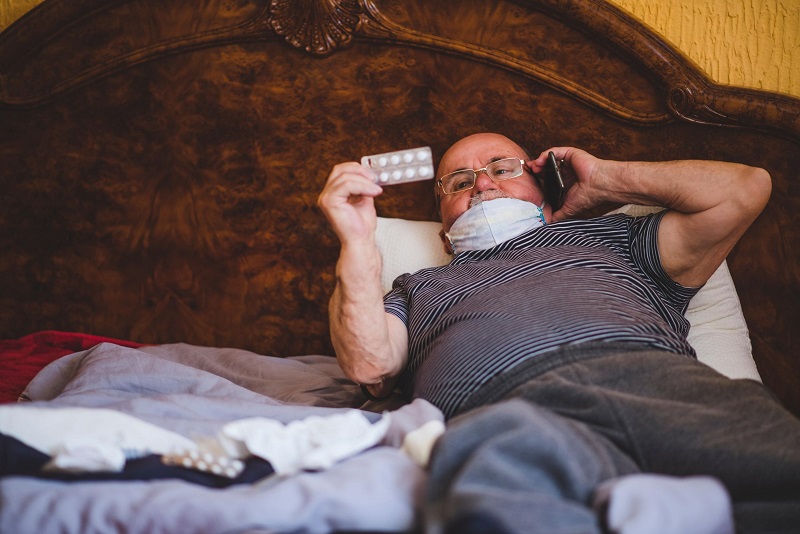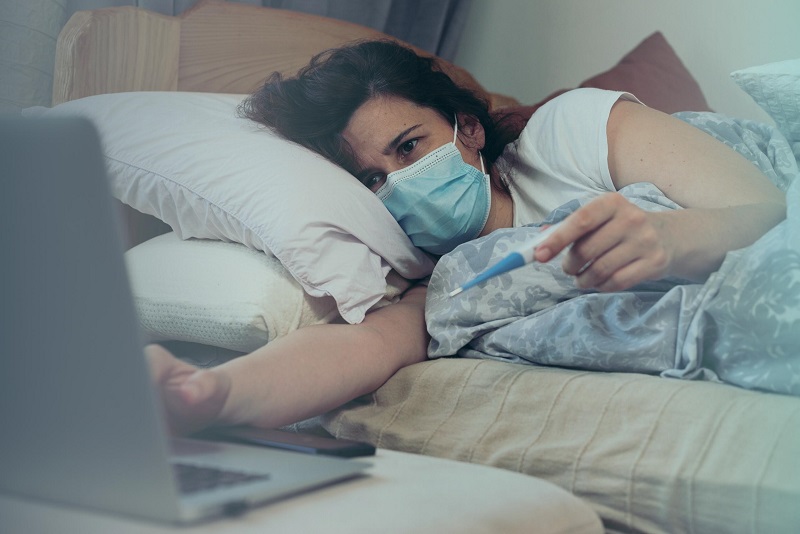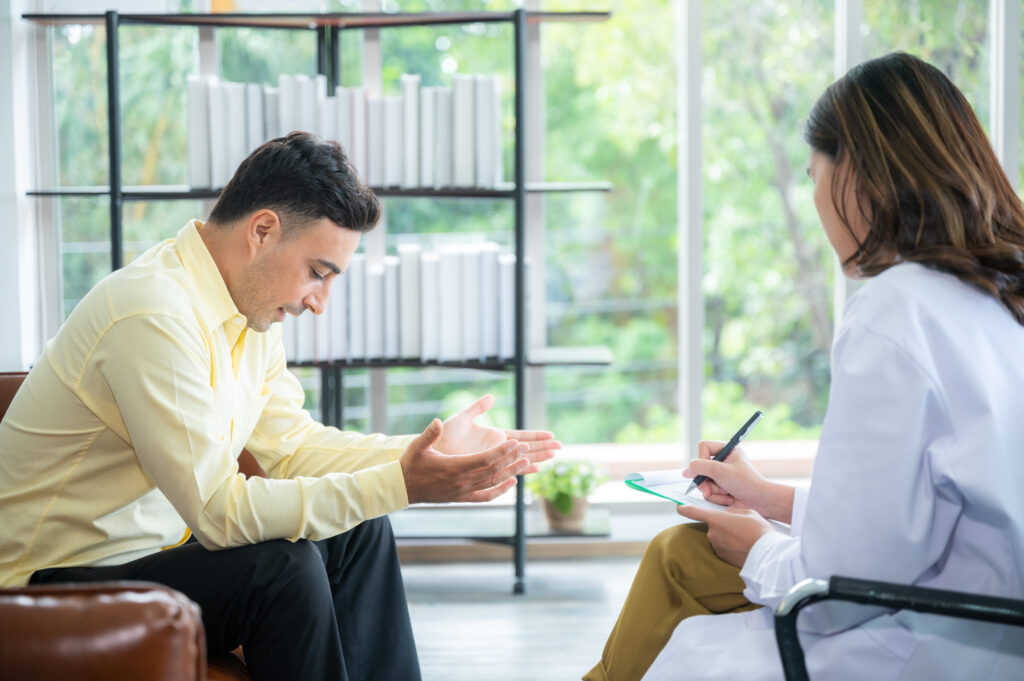When you or someone you know tests positive for the COVID-19 virus, it can feel frightening, especially if you’re unvaccinated, have underlying medical conditions, and come down with symptoms.
You probably already know that the first thing you need to do is isolate yourself at home to avoid spreading the virus to others. However, what you may not know is how to alleviate its wide range of symptoms, know when to seek emergency care, or support a loved one infected with the virus.
What should you expect? Here are some of the symptoms to be wary of 2-14 days after exposure to the COVID-19 virus as per CDC:
- Fever
- Headaches
- Chills
- Nausea
- Diarrhea
- Shortness of breath
- Loss of taste and smell
- Runny nose
- Sore throat
- Muscle pain
- Fatigue
- Trouble concentrating or ‘brain fog’
* Some may only experience some of the aforementioned symptoms, making testing an essential aspect to stop the spread whenever you or the person you’re taking care of starts to feel any of the symptoms.
So, what do you do next? Should you just wait for the virus to subside after a couple of days with adequate rest and hydration?
Although rest and hydration are essential, this may not always be enough to combat COVID-19. Once someone isolates him/herself from others, the next course of action should be to contact a healthcare provider, even if symptoms are only mild.
Whether you’re taking care of yourself or others at home, here’s what you’ll need to do:
Taking care of yourself

- Monitor your symptoms
The symptoms of COVID-19 can vary. Whenever you develop recurring or new symptoms, make sure to write them down. Same goes for whenever you take your medicine, measure your temperature or blood oxygen level, and when symptoms resolve. Having a detailed log of what you’ve been doing and feeling the past few days will make it easier for the doctor to administer a treatment plan if needed.
In reality, those fully vaccinated who develop breakthrough infections may only experience one or two of the symptoms mentioned above, making vaccination the easiest solution to avoid a severe infection, despite the possibility of rare side effects. Simply put, according to health authorities, the high reward outweighs the minimal risks.
Reports have even shown that vaccinated adults are 90% protected from a severe infection from COVID-19. In another report by Forbes, over 160,000 unvaccinated Americans died of COVID-19 from June to December 2021 alone.
- Perform breathing exercises
As you already know, COVID-19 is a respiratory disease that penetrates your lungs, causing you to have trouble breathing and possible other long-term health issues.
Before you learn different breathing techniques to improve your lung health when dealing with COVID-19, make sure your room has enough air circulation. This is because dry air can cause coughing and even chest tightness.
The next step is to consult your doctor if you’re ready to engage in different breathing exercises. For the most part, if you’re still having a fever, having trouble breathing while at rest, having chest pain or palpitations, or have swelling in your legs, it is advised to forgo breathing exercises until symptoms subside.
Meanwhile, if you don’t have the following symptoms but start to feel the following when performing breathing exercises, seek help immediately when the symptoms don’t subside while you’re at rest:
- Dizziness
- Irregular heartbeat
- Excessive fatigue
- Cool, clammy skin
Once you’re given the go signal, here are some exercises that you can do:
- Deep breathing while on your back
- Yawn to smile
- Deep breathing while on your stomach
- Humming
- Deep breathing while standing
- Deep breathing while sitting
As Peiting Lien, physical therapist at Johns Hopkins, said: “Deep breathing can help restore diaphragm function and increase lung capacity. The goal is to build up the ability to breathe deeply during any activity, not just while at rest.”
For a thorough tutorial on how to accurately perform the following breathing exercises mentioned earlier, please click here.
- Maintain communication with others
Having to go through COVID-19 can be a lonely and frustrating experience — being separated from your family, the uncertainty of not knowing when symptoms will resolve, and the risk of developing long-COVID are just the tip of the iceberg when it comes to the struggle of overcoming COVID-19.
In these dire times, don’t be afraid to reach out to others. It can be a friend, a family member, or by joining support groups. Having that support system will be crucial in your day-to-day recovery from COVID-19.
Taking care of others
- Limit contact
COVID-19 spreads through droplets created when someone within six feet talks, coughs, or sneezes. When taking care of others, make sure to limit contact by giving them a separate room and bathroom while they isolate themselves. If you’re at a higher risk of contracting the disease, it is preferred to have someone else take care of them as well.
- Always wear a face mask
If providing a separate room for the sick patient is unattainable, make sure to wear a face mask at all times and avoid touching your eyes, nose, and mouth. Once your mask gets wet, the fit is no longer snug, the fabric is dirty or has worn out, replace it with a clean, dry mask immediately.
When in the same room as the person infected with the virus, also make sure to increase air circulation by opening the windows and using humidifiers.
- Frequently clean and disinfect surfaces and objects in your home
The COVID-19 virus has been known to last longer depending on the material of the surface and temperature. When cleaning your home, make sure to prioritize cleaning high-touch surfaces such as doorknobs, light switches, plumbing fixtures, and chairs as much as possible. When using household cleaning agents, pay close attention to the label and use them only on specified surfaces.
- Take care of yourself as well
The stress and caution needed when taking care of someone with COVID-19 can be overwhelming at times. It’s easy to get so caught up with trying to take care of someone that you forget to take care of yourself in the process, resulting in a change in your eating and sleeping habits, as well as negative effects to your mental well-being.
For you to avoid burnout, here’s what you can do:
- Ask for support from others
- Allocate a portion of your day to do what you love
- Have a routine
- Find healthy outlets for stress
When to seek medical help
Most COVID-19 cases can be managed at home. But whenever you or the person you’re taking care of start to have the following symptoms, seek immediate emergency care:
- Trouble breathing
- Persistent pain or pressure in the chest
- New confusion
- Inability to wake or stay awake
- Pale, grey, or blue-colored skin, lips, or nail beds (depending on skin tone).







